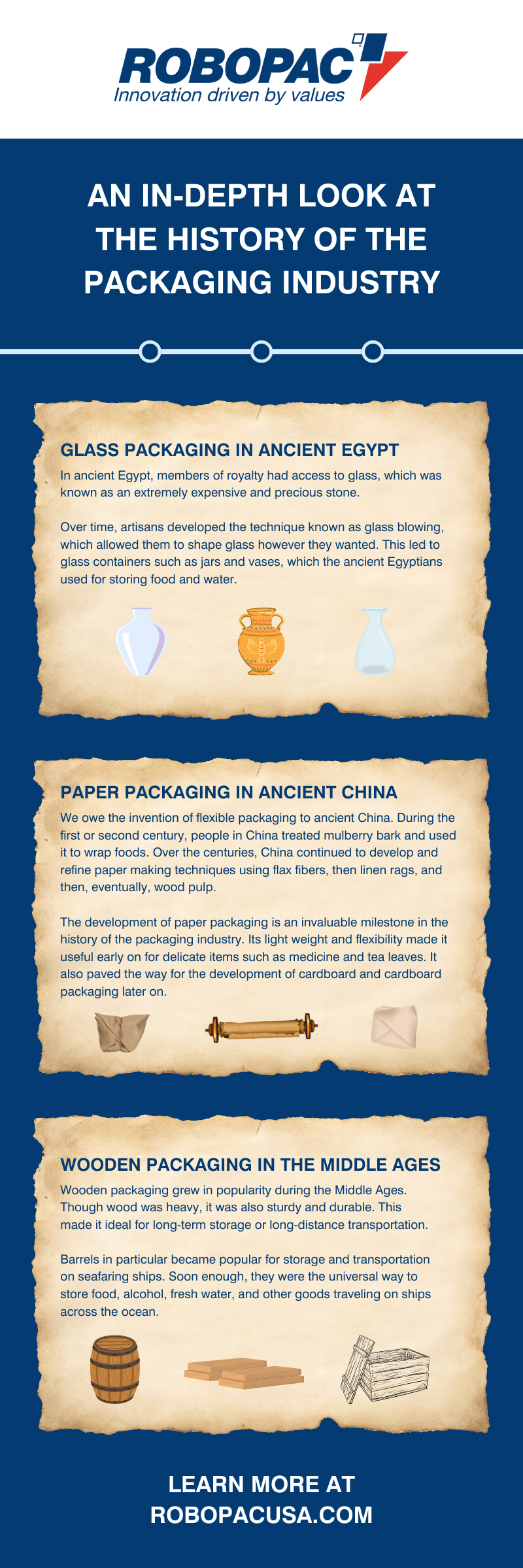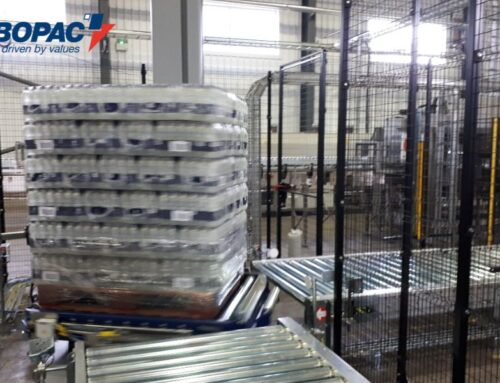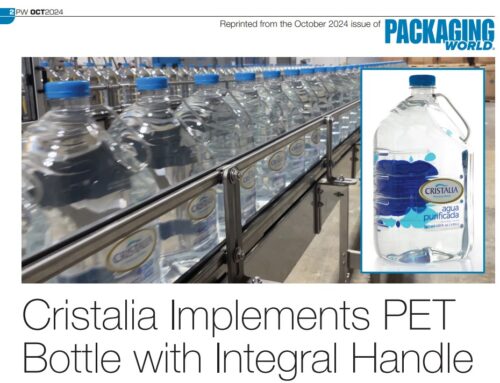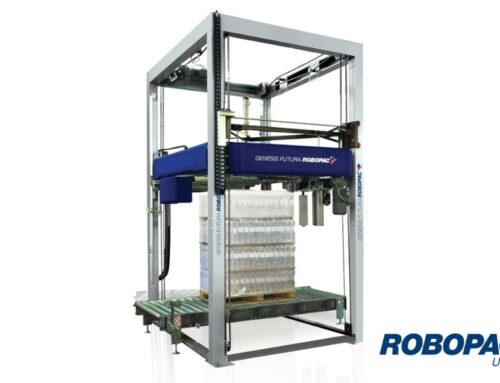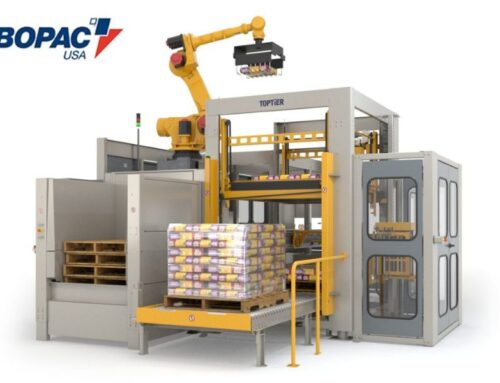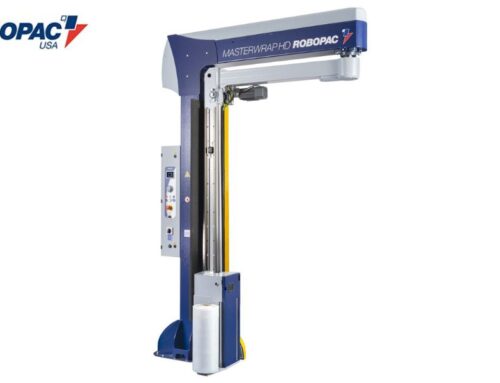Product packaging is a core part of the consumer experience. Without proper packaging, companies wouldn’t be able to safely transport or store their products and customers wouldn’t be able to differentiate between different brands or easily learn about the details of the product they’re buying. From health and safety to branding and marketing, packaging is a key player in a wide variety of industries.
But where did it all begin? Though packaging has changed a lot throughout the centuries, the core idea of it has been around for much of human history. Take an in-depth look at the history of the packaging industry and see how modern packaging came to be with this guide.
Why Packaging?
Packaging dates all the way back to early human history, when nomadic communities of hunters and gatherers roamed the earth. After all, packaging plays a very basic yet essential role that even the earliest humans needed: easier item storage and transportation. Throughout early human history, people used natural materials to carry food, tools, and other belongings. The earliest packaging includes things such as pouches made of animal skins, food wrapped in leaves, carved horns to store water, or hollowed out nuts and gourds to carry smaller objects.
Glass Packaging in Ancient Egypt
These simple yet effective solutions changed a lot over time as different cultures developed different materials and products. In ancient Egypt, members of royalty had access to glass, which was known as an extremely expensive and precious stone.
Over time, artisans developed the technique known as glass blowing, which allowed them to shape glass however they wanted. This led to glass containers such as jars and vases, which the ancient Egyptians used for storing food and water.
Paper Packaging in Ancient China
We owe the invention of flexible packaging to ancient China. During the first or second century, people in China treated mulberry bark and used it to wrap foods. Over the centuries, China continued to develop and refine paper making techniques using flax fibers, then linen rags, and then, eventually, wood pulp.
The development of paper packaging is an invaluable milestone in the history of the packaging industry. Its light weight and flexibility made it useful early on for delicate items such as medicine and tea leaves. It also paved the way for the development of cardboard and cardboard packaging later on.
Wooden Packaging in the Middle Ages
Wooden packaging grew in popularity during the Middle Ages. Though wood was heavy, it was also sturdy and durable. This made it ideal for long-term storage or long-distance transportation.
Barrels in particular became popular for storage and transportation on seafaring ships. Soon enough, they were the universal way to store food, alcohol, fresh water, and other goods traveling on ships across the ocean.
Changes During the Industrial Revolution
Like many industries, packaging changed substantially because of the advancements of the Industrial Revolution. With a surge in new, more widely available products came a sharp increase in demand for accessible, efficient, and effective packaging designs. Many of the packaging materials of the time were expensive to source, which meant high-quality packaging was mostly limited to luxury goods. With the rise of new materials and manufacturing techniques, though, that began to change.
The Rise of Cardboard
Though cardboard was invented in China in the 1400s, it became more popular as a packaging technique in 1817 when Sir Malcolm Thornhill of England developed the cardboard box. This gentler, lighter packaging quickly became popular for more delicate products. For example, it was immensely popular with silk manufacturers in Japan who needed a safe way to ship moths to Europe.
Cardboard continued to develop and evolve throughout the 1800s. Pleated paper arose in England in 1856, leading to the development of corrugated cardboard in New York City in 1871. Corrugated cardboard was a popular material for packaging glass products such as bottles and lanterns. In 1874, Oliver Long invented corrugated board with liner sheets. In 1895, manufacturers in the United States began creating and using corrugated cardboard boxes for a wide variety of goods.
Napoleon and Food Preservation
Packaging has also helped evolve food preservation techniques. In 1795, Napoleon Bonaparte sought better food preservation techniques to help keep his army fed. He offered 12,000 francs to anyone who could invent a new and more effective way to safely preserve food.
The result was Nicolas Appert’s canning methods. Appert, a chef from Paris, discovered that boiling food and then sealing it in tin or glass containers helped preserve it for long periods of time. Boiling served as a way to sterilize the food, while airtight containers kept it safely sealed for months or even years. This method is still used in canning today.
The Rise of Plastic Packaging
Plastic was first discovered in the early 1800s, but it truly started to gain traction in the 1900s. One of the earliest plastic packaging products was cellophane, which was invented in 1908 by Jacques E. Brandenberger, a Swiss chemist who was trying to create a cloth that wouldn’t absorb liquids. After cellophane came saran wrap, which stemmed from the discovery of polyvinylidene chloride. Saran wrap was originally used to protect military planes from the elements. However, once developers discovered a way to remove its green color, it became a popular and safe material for food packaging.
In 1957, Al Fielding and Marc Cavannes invented bubble wrap for use as a textured wallpaper. When it didn’t gain popularity as an interior design trend, they tried to use it as greenhouse insulation. When that also failed, they pitched it as a protective packaging material to computer manufacturer IBM. IBM began using it for computers, parts, and other fragile products, and bubble wrap took off as a popular protective packaging solution.
Modern Packaging and Sustainability
Today, manufacturers and packaging suppliers are constantly looking for ways to lower carbon footprints and promote more positive environmental impacts. Smart designs that minimize waste, materials that are eco-friendly, and processes that reuse or recycle materials are all major goals of the industry.
These endeavors help businesses save money while also appealing to customers and the overarching public shift to more eco-friendly industry. Transitioning to circular economies that allow businesses to make, use, recycle, and then make again allows for less waste, a smaller carbon footprint, and more sustainable workflows for everyone.
Packaging Solutions from Robopac USA
Perfecting the designs and processes of the past is the key to creating more efficient and successful packaging now and in the future. As a leading stretch wrap machine manufacturer, Robopac USA is committed to developing innovative, efficient, and flexible packaging solutions for businesses across a wide range of industries. Explore our automatic and semi-automatic packaging equipment and see how we can help elevate your business today.
